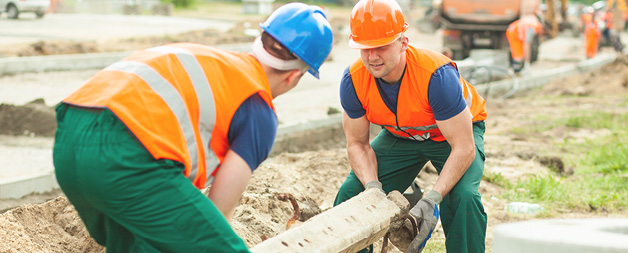
Improve your technique
Body injuries are a major contributor to mortality and permanent disability in Australia. They result in nearly half a million people being hospitalised each year and roughly 12,000 deaths.
Trauma to joints, ligaments, muscles, and tendons are the most common types of injuries.
We may never be able to eliminate all accidents that lead to bodily injury, but we can take preventive measures to protect ourselves as much as we can through good technique both in and out of the workplace.
How to lift a heavy load safely
It’s well established that physical activity can be very beneficial for us. It develops our strength, work capacity, and it delivers numerous health benefits. Whether that physical activity means doing your job, serving your community, doing chores at home, or training at the gym, having a good understanding of proper technique is crucial.
- Maintain a solid stance – Everything starts with the good foundation, and you need to have solid footing and a wide enough stance before ever attempting to lift something heavy.
- Squat down with your knees behind your toes – As you maintain the natural curve of your lumbar spine, squat down to grasp the load. As you squat down, make sure that your heels stay on the ground, ensuring that your foundation is solid and make sure that your knees don’t travel in front of your toes.
- Maintain good posture as you grip the load – As you’re ready to lift the load, maintain good posture (a good cue is to keep your shoulders back and head up), and grip the object well.
- While keeping the load close to your body, slowly lift it up and maintain a neutral spine – With a solid grip, keep the load close to your center of gravity, take a deep breath to ensure core stability, and slowly raise it off the floor by using your leg muscles to squat up.
- Set the load down in reverse order – When setting a load down, don’t just bend forward without engaging your legs. This will cause your spine to flex and could lead to an injury. Instead, slowly squat down and extend your knees back a bit with the load close to your body and your spine neutral.
Avoid overexertion
There are two main contributors to overexertion that we need to keep in mind:
1. Repetitive tasks
Repetitive movement, especially when done with poor technique can lead to overexertion and overuse injuries over time. Tasks such as lifting heavy objects, sitting with poor posture, typing, and working in an awkward position can all lead to problems.
To avoid overexertion due to repetitive tasks, it’s important to:
- Practice good posture (especially if your job keeps you seated for long periods);
- Always use proper technique and bracing patterns when lifting and carrying heavy loads;
- Take regular breaks, especially if you notice that fatigue is causing you to break down your technique;
- Strengthen your body with weights and follow a stretching routine to improve your flexibility.
2. Fatigue
Fatigue can result from many different things such as working too hard, working without a break, not sleeping enough, not eating enough food, not drinking enough water, and not finding any time to relax. But, fatigue can directly lead deterioration in productivity as well as technique breakdown.
To avoid becoming too fatigued, it’s important to:
- Get enough sleep each night – The general recommendation for adults is 7-9 hours.
- Exercise regularly – This increases your capacity to do work, increases your energy levels, and is beneficial for cognitive function.
- Maintain a healthy diet that is based around whole, nutritious foods. Limit highly-processed foods, especially those jam-packed with processed carbs.
- Stay hydrated throughout the day – A good rule is to consume 3 liters of water per day for men and 2 liters of water for women.






Comments